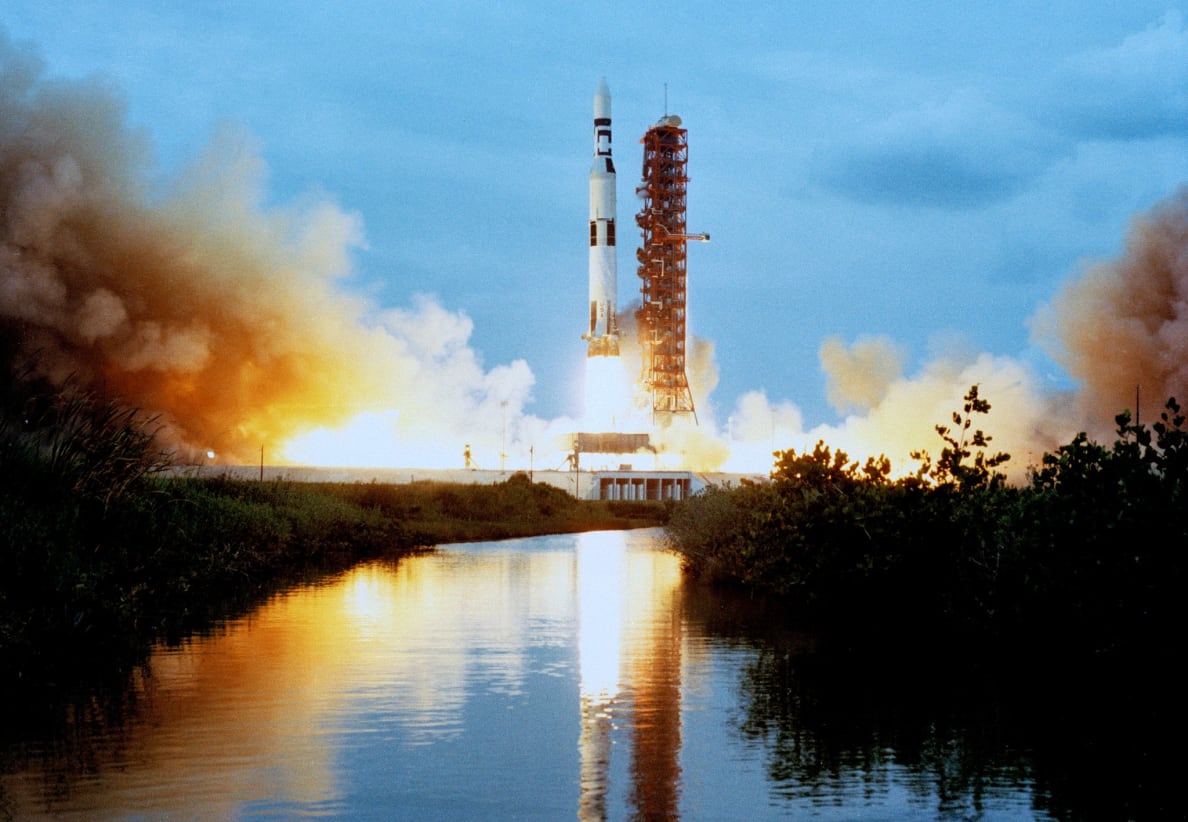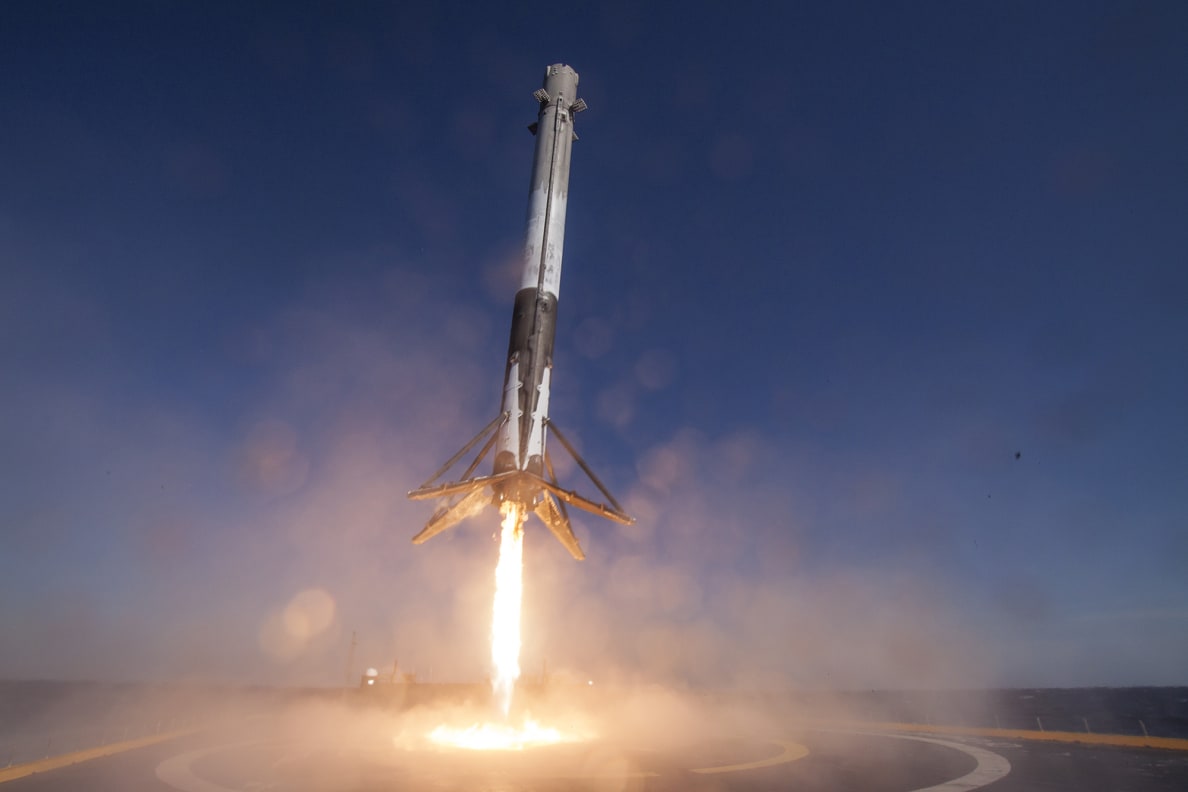

All rockets are not created equal. Small-rocket startup Astra learned that lesson the hard way this month, after its latest mission, tasked with sending four small NASA satellites into orbit, ended in failure. A mere three minutes after launch, the rocket’s second stage failed to separate from the first stage, and both parts ended up spinning out of control over the Atlantic.
In the quest to build the perfect rocket, there are three big criteria most space companies want to check off: safety, the ability to carry a large payload, and affordability. Striking that balance is a formidable challenge. But it could be exactly what humanity needs to catapult us into a new era of technological advances.
Founded in 2016 on the premise of “improving life on Earth through space,” Astra’s relatively short history inside the commercial space race has been riddled with a number of highs and lows. But some experts say that when it comes to building the perfect rocket, unexpected complications aren’t always necessarily a bad thing. In fact, they’re par for the course.
“If you look back at the beginning of the space age, there were a lot of failures, a lot of lessons learned,” Donald Edberg, an aerospace engineer at Cal Poly Pomona, told The Daily Beast. Some of the most devastating rocket failures of the century include a 2013 Russian rocket veering wildly off course and spreading poisonous gas to a nearby town, to the 2016 launchpad explosion of SpaceX’s flagship Falcon 9 rocket. “Now some of these small companies are going through the same learning curve.”
And of the hundreds of companies currently developing space launch systems, Edberg expects only a handful of small launch vehicle companies will end up dominating the field. “I would be surprised if more than probably five or six companies survive and go on to be profitable companies that are making money and being successful,” he said.
But while the previous rocket boom of the 1960s was fueled both by scientific inquiry and the rising tensions of the Cold War, the race to build the ultimate rocket in 2022 resembles something closer to obsession. Everyone’s looking to be the next SpaceX, whose reusable Falcon 9 rocket has been perhaps the biggest reason why going into space is cheaper than ever.
That said, the answer to one question still eludes us: What does it take to build the ultimate rocket, and what would such an accomplishment mean for humanity’s advance to the stars?
“If you look back at the beginning of the space age, there were a lot of failures… Now some of these small companies are going through the same learning curve.”
— Donald Edberg
Building a spacecraft capable of leaving Earth’s atmosphere isn’t easy. (It’s called rocket science for a reason.) Unlike other feats of modern engineering, most spaceflight prototypes have to be completed first before they can even be tested out. It’s no surprise that many long-awaited designs, drummed up with extra hype, have been met with a poor execution.
Here are some of the most prevalent high-profile rocket failures in the past decade:
Given the volatility of rockets, safety is paramount. Unfortunately, the swell of new private actors making up their own rules for space exploration makes it difficult to enforce safety in the space sector. Just last year, the Federal Aviation Administration investigated allegations raised by Blue Origin employees, an alarm raised during Richard Branson’s Virgin Galactic flight, and a violation by SpaceX during a test of its Starship vehicle. Not even three of the most high-profile new space companies were immune to safety concerns.
Markus Schiller, an expert in mechanical engineering and founder of ST Analytics, a space technology and rocketry consulting firm, told The Daily Beast that safety in the field can be hard to quantify, but often comes down to the amount of risk people are willing to put up with.
Although getting to space is easier today than it’s ever been, said Schiller, the bottom line is that getting to space will always be extremely dangerous.
“You’re so close to the limits of technology, you don’t have many safety factors,” said Schiller. “If something goes wrong, that’s very different to any other engineering discipline.”
Typical rockets, which can take anywhere from a year to five to construct, undergo hundreds of tests before getting the green light to lift off. But unlike a faulty car that can be recalled or a plane that can be grounded, a rocket doesn’t have the luxury of turning back the clock.
Firefly Aerospace’s first Alpha rocket suffered a catastrophic anomaly during its first launch leading to the loss of the vehicle 2 minutes, 30 seconds after liftoff from Vandenberg Space Force Base, California, U.S. September 2, 2021.
“[A rocket] is a highly complex machine. You only need one thing to go wrong for a launch to not be successful, but you need thousands to go right,” Morgan Bailey, director of communications for New Zealand-based company Rocket Lab, told The Daily Beast. “There’s a huge amount of work that goes into building a launch vehicle, testing it, building the support and safety systems around it and successfully deploying something to orbit.”
Even the most reliable rockets, like the United Launch Alliance’s Atlas V (which holds a record of 148 successful space launches) still experience a few defeats from time to time.
Whether it’s scientific instruments, humans, or even cheese, anything a rocket launches into orbit is considered a payload. In order for a rocket to be considered even remotely impressive by current industry standards, one of the most critical things it should do is carry and protect a sizable haul.
How much cargo a spacecraft can hold usually depends on what the mission needs a spacecraft to achieve. “Everything that you add to the rocket is heavy, and so if you have to carry it along, that makes the rocket thicker,” Schiller said. And that includes fuel. NASA’s Saturn V rocket, used to launch the Apollo missions, was one of the largest and most expensive rockets to date. It was able to carry 107,000 lbs of material to the moon.
But achieving that capability came at an enormous cost: $185 million per launch, which is over $1.25 billion today. This was, in large part, due to the fact that the rocket expended about 20 tons of fuel per second.

The Skylab 1-Saturn V space vehicle is lifts off from Kennedy Space Center on May 14, 1973.
On the other hand, between 1966 and 1973, 32 Saturns Vs were launched into space. Not one ever failed. It remains a model rocket that many experts still look up to today, including Schiller.
“Thinking back to the technical means they had back in the 1960s, It is a miracle that they managed to build such a huge machine, that it worked more or less flawlessly, and succeeded in every mission,” Schiller said. “That’s impressive.”
The costs may have been worth it for Apollo, but they are prohibitive to almost any mission today. Thankfully, nowadays liquid fuel is less expensive to make and has a pretty widespread market. Commercial space companies spend only a few hundred thousand dollars on fuel, (versus tens of millions 50 years ago) fuel costs are almost negligible in comparison to the cost of an entire mission. For instance, back in 2015, SpaceX stated that of the $16 million it costs to build a Falcon 9, only about $200K is needed to fuel it.
These costs are sure to come down even more over time. Some space obsessives hope that by mining water ice reserves on the moon, we can split that water into hydrogen and oxygen to make rocket fuel—potentially turning the moon into something of a futuristic interplanetary gas station en route to Mars and beyond. That would create even more room for rockets to lug larger payloads through space.

SpaceX’s Falcon 9 rocket makes its first successful upright landing on the “Of Course I Still Love You” drone ship on April 8, 2016.
You’ve probably seen videos of SpaceX’s Falcon 9 booster falling from space back to Earth and firing its thrusters as it lands on a barge in the middle of the ocean. This isn’t just the company’s go-to party trick—it’s an idea for how to make rockets reusable, and therefore make space launches more affordable. Emboldened by SpaceX’s success, many new commercial space companies, and even countries like Russia and China, are throwing their money into reusable rocket designs.
According to Edberg, up until a few years ago, the prevailing wisdom was that it wasn’t worth trying to recover used rockets because it was so expensive and too difficult. Advances in technology as well as an increased public awareness about a spacecraft’s environmental impact have since changed public opinion about reusability.
It also helps that the numbers speak for themselves. SpaceX, for example, has lowered their Falcon 9 launch prices by more than 40 percent since 2016. Their vertical landing approach, which is more reliable than using a parachute, works by using gas thrusters to flip the rocket right-side up. Then, when it lands, legs extend to help it land. The once-unique landing also gives spacecraft more flexibility, since they’re able to take off from anywhere. Blue Origin uses the same approach to land its New Shepard’s rocket booster.
But reusability comes in many different forms. Rocket Lab, for instance, wants to make its Electron rocket the first small-launch vehicle of its kind to be reusable. It wants to recover its boosters by catching them in mid-air with a helicopter. It’s first attempt will be later this year—and if successful, it will pave the way for the company to slash its launch prices down tremendously.
The most extreme vision of reusability is perhaps Starship, SpaceX’s proposal for taking people to the moon and Mars one day. Nearly all the Starship hardware (including the launch infrastructure on the ground) is supposed to be reusable, and capable of facilitating dozens of spaceflights in a row. That will be an incredibly tough thing to achieve, but the company is forging full speed ahead on these plans.
Whether it’s to make a buck or help humans colonize new worlds, the ultimate goal in building the perfect rocket is to make space more accessible. We’re closer to this goal than ever before, but it’s nevertheless safe to say we’re still years off from building the quintessential masterstroke of aerospace engineering—the perfect rocket.
Yet some experts, including Schiller, have a much more optimistic view of the high stakes humanity’s obsession with touching the stars has led us down. In his point of view, the perfect rocket doesn’t necessarily need to exist for us to achieve our goals in space.
“There are many approaches, and all of these approaches might work one way or another,” said Schiller. “In the end, we will only know if we have a rocket that actually works every time. In hindsight, that was the perfect rocket.”
24World Media does not take any responsibility of the information you see on this page. The content this page contains is from independent third-party content provider. If you have any concerns regarding the content, please free to write us here: contact@24worldmedia.com

A Brief Look at the History of Telematics and Vehicles

Tips for Helping Your Students Learn More Efficiently

How To Diagnose Common Diesel Engine Problems Like a Pro

4 Common Myths About Wildland Firefighting Debunked

Is It Possible To Modernize Off-Grid Living?

4 Advantages of Owning Your Own Dump Truck

5 Characteristics of Truth and Consequences in NM

How To Make Your Wedding More Accessible

Ensure Large-Format Printing Success With These Tips

4 Reasons To Consider an Artificial Lawn

The Importance of Industrial Bearings in Manufacturing

5 Tips for Getting Your First Product Out the Door